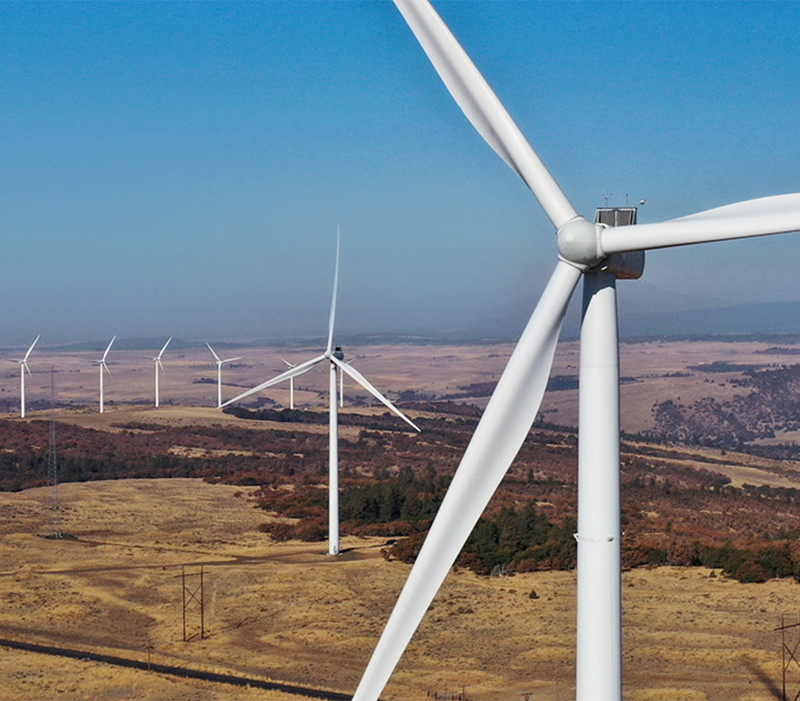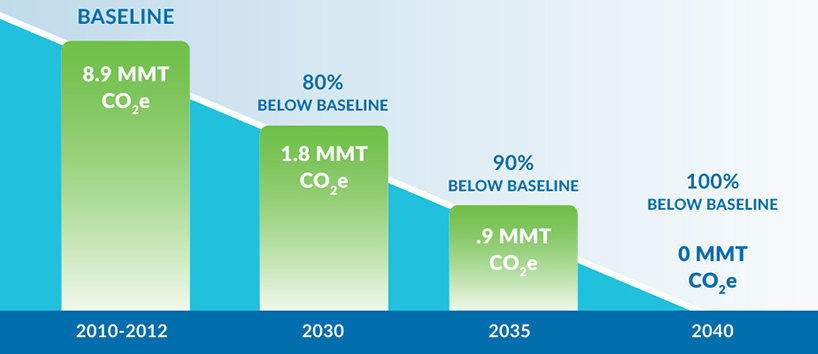Oregon Clean Energy Plan
La información en español se puede encontrar más abajo en esta página.
In alignment with Oregon House Bill 2021, our Oregon Clean Energy Plan (CEP) lays out our path to a sustainable future while delivering benefits to local communities.
Reducing greenhouse gas emissions
In 2021, Governor Brown signed House Bill (HB) 2021 into law, which provides an emissions-based clean energy framework for electricity providers. The reduction goals include:
- 80% below 2010-2012 baseline emissions levels by 2030
- 90% below baseline emissions levels by 2035
- 100% below baseline emissions levels by 2040


Chart represents emissions reduction rates in million metric tons carbon dioxide equivalent.
Clean Energy Plan
The Clean Energy Plan, or CEP, is specific to Oregon customers and communities and focuses on community-based actions to meet clean energy milestones. It’s based on PacifiCorp’s 20-year, long-term planning document, known as the Integrated Resource Plan or IRP.
The first CEP was filed with the Oregon Public Utility Commission on May 31, 2023, with details on:
- A clean energy strategy with proposed specific actions to meet outlined milestones;
- Measurement of potential benefit and/or impact to communities of the resources proposed; and
- Discussion of how PacifiCorp should comply with the requirements as it moves toward 100% renewable and non-carbon-emitting energy in Oregon.
Community engagement
To develop the best possible CEP for Oregon, we are committed to gathering stakeholder input throughout the process. We invite and encourage customers and the general public to participate in our planning discussions.
Our strategic engagement activities and opportunities include the following:
Clean Energy Plan & Integrated Resource Plan
These meetings provide opportunities for all stakeholders to learn more and provide feedback on our CEP and IRP.
Community Benefits & Impacts Advisory Group
The CBIAG seeks stakeholder feedback to align our focus on equity with our commitment to a clean energy future.
Tribal Nations engagement
We’re working to build a strong partnership for consultation and collaboration with Oregon Tribes.
Distribution System Planning
These public workshops convene stakeholders to plan and modernize the grid.
We also engage on our transportation electrification planning efforts in Oregon.
PacifiCorp’s 2024 Report on CEP Engagement
If you have questions, feedback, or would like to be added to the distribution list for the Oregon Clean Energy Plan, please email us at OregonCEP@PacifiCorp.com.
Meeting schedules are subject to change.
2026 Public Input Meetings
1/27/2026
|
1:00 p.m. - 4:00 p.m. PT; Pacific Power | Oregon Special Session on Environmental Justice Community Framework Meeting |
Previous Meetings
Información de Reuniones en Español
Oregon feedback tracker
As Pacific Power seeks direct stakeholder feedback to build an inclusive and accessible process for consultation and collaboration, it has begun to develop a tracker of this input and questions received through its various engagement spaces. The Feedback Tracker includes the feedback and responses provided, and where applicable, impact(s). The Feedback Tracker reflects a point of time in the process, and it will continue to be updated as it develops further on a quarterly basis, and as more collaboration takes place.
Prioritizing community benefits
Our Oregon CEP is more than an ambitious plan for decarbonization — it’s a commitment to the customers and communities we serve.
Here is a closer look at our community engagement efforts and ways you can participate in energy planning.
Integrated Resource Plan
Our CEP work in Oregon is powered by our commitment to a clean energy future across our six-state service region. By coordinating efforts region-wide, we are simplifying and streamlining our energy transition path. Drawing on comprehensive data analysis and stakeholder input, we regularly update our Integrated Resource Plan (IRP), which serves as a roadmap for transforming the western grid at scale. See details on the Integrated Resource Plan.